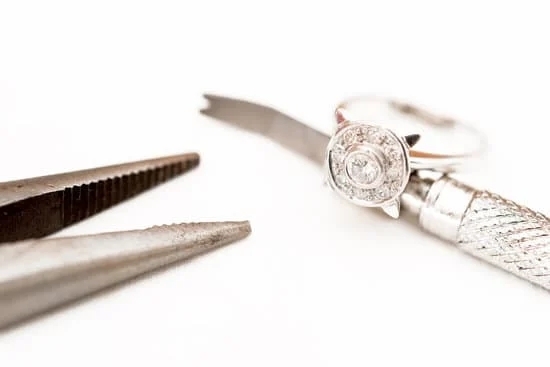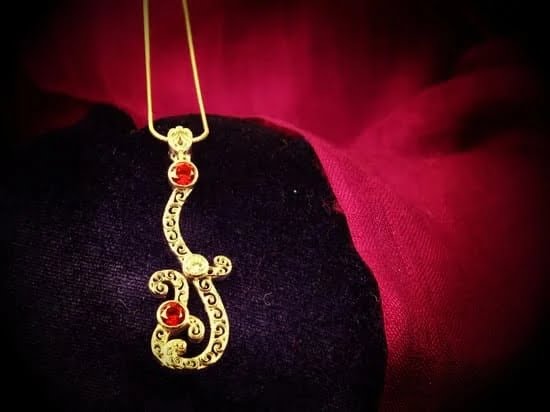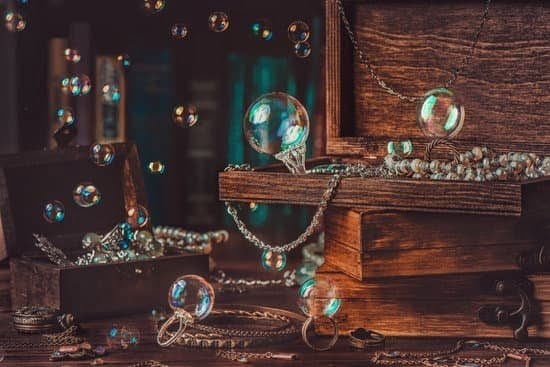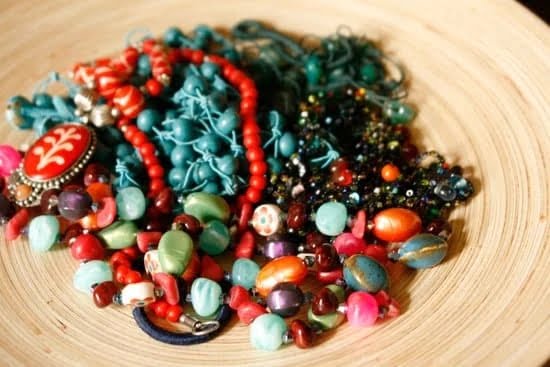The history of jewelry chain dates back centuries ago when ancient civilizations used Braided wire and metal alloy to create a variety of pieces. Early forms of chain jewelry was often used for ceremonial purposes such as religious ceremonies, dances and other rituals.
The earliest known examples of jewelry made with chain comes from the Egyptian, Greek and Roman civilizations. During this period, intricate gold chains were used as royal accessories and were often adorned with precious stones, beads or feathers. The Greeks also embellished their chains with colorful glass beads. By the 5th century AD, Byzantine artisans had perfected the art of making intricate link chains that are still popular today.
In Medieval Europe, precious metals such as silver, gold and platinum were commonly used in the production of complex link designs. Intricately carved items such as crucifixes, ornate pendants and beautifully crafted lockets were popular during this time period. Jewelry makers also began using gemstones to add color to these chain pieces.
During the Renaissance period chain designs became more elaborate as fashionistas around the world sought out ever more exquisite materials for their jewelry design than before. Silver filigree was one material that quickly became a popular choice for creating chains due to its intricate details and delicate beauty.
Chain jewelry continued to grow in popularity throughout the 19th century due to advances in machinery which allowed manufacturers to mass produce simpler styles at a much lower cost than handcrafted designs at the time. Today there are literally hundreds of different materials that can be used to craft modern chain pieces ranging from Sterling Silver to stainless steel varieties which makes them far more budget friendly than their traditional counterparts while still retaining their inherent luxury feel and look.
Ancient Gold and Silver Chains
Jewelry chain is an essential part of jewelry design and has been used in ornamentation since ancient times. The earliest cultures crafted beautiful jewelry chains out of gold, silver and other metals as an expression of wealth and profoundly as important ritual objects. This can be seen in artifacts from Sumerian civilizations where necklaces made from birds, hunted animals and linked pan-shaped pendants were believed to provide the wearer with protection from the gods.
The use of precious metal for jewelry became especially prominent during the Middle Ages. By this time, goldsmiths had developed sophisticated techniques for creating chains with intricate knotting and braiding designs.
Jewelry was one of the main items of trade between East and West during this period, leading to a wave of innovation across Europe and Asia. Goldsmiths forged rare pieces using colorful gemstones set within filigreed shapes that could often be connected together with more chains or links into one long necklace or strand.
The industrial revolution saw a significant advance in chain production as machines allowed for greater accuracy and quality control throughout the designing process. This was mostly achieved through new methods such as soldering, stamping and electroplating.
As technology advanced further, so did the techniques that jewelry makers used to create modern style chains with interlocking styles such as box weave, snake weave and even figure eight variations – which had previously not been possible by hand. By the 1940s complex links like these had become commonplace among fashion accessories designers all over the world, helping to cement their place in history as icons of style and luxury.
Chain Makers of the Renaissance and Their Notable Achievements
The history of jewelry chain is as old as time itself. Jewelry chains have been around since the days of ancient Egypt and Mesopotamia, where they were used primarily as decorative items. Throughout history, many cultures have adopted the use of jewelry chain for both decoration and symbolism. By the Renaissance period in Europe, goldsmiths had begun to perfect their craftsmanship of creating intricate chains with various styles and colors.
Chain makers during the Renaissance period revolutionized the artistry and complexity of jewelry chains. They began experimenting with different weaving techniques to create unique pieces unlike any seen before. Some notable achievements made by these skilled craftsmen include link-to-link connecting components, fine meshwork designs featuring multiple colors and round wire wrappings that adorn backside zones for a more glamorous aesthetic.
Their works were intricate and often worn by nobility or members of high standing in society. In some cases, specific symbols such as interlocking circles lacing over each other were said to represent bonds between married couples or two lovers and were often worn on rings or chains hung around necks.
The impact of these Renaissance chain makers can be seen today in modern jewellery design where traditional shapes are combined with newer technologies for a more diverse range of products available for consumers. Through innovation and experimentation, contemporary jewellery designers continue to strive for excellence in craftsmanship while finding new ways to show off one’s unique style through individualized pieces that reflect personal interests or beliefs.
This is a testament to the pioneering spirit of Renaissance chain makers whose works still capture our imaginations hundreds of years later not just as fashion statements but rather timeless expressions of beauty that speaks truth on another level altogether.
Precious Metals and Precious Stones
Ever wonder how jewelry chain is made? The process of creating beautiful necklaces, chains and pendants begins with a substance that has been around for millennia – precious metals. Precious metals are rare elements then are sought after and highly valuable. Platinum, gold, and silver are the three most common metals used to create jewelry pieces. Beyond having a stunning aesthetic, these metals also offer superior strength and durability which makes them ideal for crafting chain styles in particular.
The formation of jewelry chain usually starts with sheets or wires of metal that have been formed into the shape of links. The link dimensions vary depending on the style of the chain being made. Traditional jewelry chains were mainly created using simpler link shapes such as circles, ovals, and squares while modern creations tend to feature more complicated designs like interlocking shapes or geometric patterns that follow intricate detailing techniques like soldering or forging.
After choosing precious metals as the material for producing a high quality chain, many jewelers also choose to add precious stones to further enhance the beauty and value of their creation. Typically this includes diamond, rubies, emeralds, or sapphires although other stones such as pearls can be incorporated too.
By setting these gems into sections of gold or silver chain settings each piece is given an additional sparkle thereby completing a timeless jewelry design. For example pure gold rope chains are often studded with diamonds so they appear to shimmer when exposed to sunlight or light reflecting off other surfaces.
The process behind creating strong yet elegant chains requires skill and attention to detail from the jeweler fashioning it from a sheet of metal into its desired design but when finished properly it can provide an utterly magnificent beauty that lasts for lifetimes.
These beautiful pieces range in size from delicate necklaces for everyday wear all the way up to exquisite showpieces meant for special occasions only; whichever kind one prefers there is bound to be something special about them related directly back to its formation in precious metals.
Rich Style of Victorian-Era Jewelry Chain Crafting
The history of jewelry chain crafting dates back centuries and has changed drastically depending on the era. Jewelry chain crafting is both a form of art and science, in which craftspeople skillfully craft links in a very precise way that makes sure pieces are secure and safe. One of the most influential eras for jewelry chain crafting is the Victorian Era. During this time, greatly intricate designs were created using beauty, elegance, grandeur, and creativity being showcased in every piece.
Jewelry chain craftsmanship during this era was an expression of culture as well as fashion. The chains were usually made from precious metals such as silver or gold and they often had different colors added to their links in order to create beautiful patterns.
During this period, jewelers started creating multi-link chains which meant that instead of having chains made up exclusively of one type link, they would combine different types together creating interesting layered effects when worn around the neck or wrists.
Another trend amongst Victorian-era jewelry chain craftsmen was to add intricately detailed charms or gems to their designs. This allowed them to make even more unique pieces for their customers such as flower-shaped charms or intricate gold pendants with precious stones bringing further sophistication and elegance to each item.
The Victorian Era also saw a rise in creativity within the craft of jewelry chain making by experimenting with different thicknesses and gauges adding further texture to the items they were producing. Some craftsmen even mastered the art of caulking meaning that exceptionally thin metal wires could be joined together forming delicate yet complex designs using pliable golden meshes that couldn’t exist prior to modern machinery advancements at the time.
Progressive Advancements in Chain Making in the 20th Century
The 20th century saw some major advancements in jewelry chain making. One of the most significant advances was the invention of automatic wire-drawing machines. This made it possible to manufacture chains quickly and cheaply, which allowed chain manufacturers to increase their productivity.
The introduction of computerized chain-making equipment also greatly improved production capabilities. Computerized machines can monitor and adjust tension on the links of a chain, helping to create an even, uniform product. This allows jewelers to maintain consistent tolerances without sacrificing quality for cost or speed. Further, this computer-aided manufacturing process enables designers to easily add intricate details and designs that would have been impossible using traditional methods.
In addition to computerization, industrial laser cutting technologies have also become widely adopted by many jewelry designers. Laser cutting is much more precise than the manual or electric saws traditionally used for jewelry making, allowing for delicate details with greater accuracy than ever before.
Lasers emit less heat than regular saw blades, enabling jewelers to work with precious metals like gold and silver at far lower temperatures than were previously achievable with traditional methods. As a result of these advances in both technology and technique, contemporary jewelry chains can be crafted with more detail and finesse than ever before as designers challenge themselves to push the limits of what they can achieve both mechanically and artistically with jewelry chain making.
Popular Materials and Techniques Used in Chain Making Today
The use of jewelry chain is an ancient art dating back over 5,000 years ago. Archeological digs have uncovered evidence of necklaces and bracelets using a variety of link chains. Chain production was highly advanced as early as 800 BC in the regions in which these artifacts were discovered.
Chain links were painstakingly formed using hand tools to manipulate the metal into shapes such as circles, triangles and squares. Techniques were used to join each link together and create the chain. As time passed, better techniques were developed to make the production process more efficient and to create different shapes including twist, half-round and oval links.
Today, several materials are used for making jewelry chains. Popular metals such as gold, silver or platinum are often used for fine jewelry designs. Many metals have anti-tarnish properties which offer a long lasting shine and durability that many consumers prefer for long-term wearability.
Metals like stainless steel, bronze and brass also provide budget friendly options with an attractive finish that can be crafted into distinctive chain designs such as twisted loops or diamond-cut links. Technology advancements are giving chain makers even more versatility when creating unique styles with added details like textures or engravings on both feature and spacer links which emphasize different finishes for visual interest.
Aside from traditional linking techniques, contemporary chain crafting utilizes computers in many areas of the production process too help significantly reduce costs while increasing accuracy yet maintain high quality standards of craftsmanship and durability in the design’s aesthetics. Machine made components help to produce intricate looking results quickly with precise consistency at a fraction of what it would take manually , enabling mass produced items to become available.
This technology also uses machines such as mills along with electron beams referred to as laser cutting for producing trend setting custom-made jewelry pieces with greater ease than ever before possible.
The Artistry of Jewelry Chain Making Continues Today
The jewelry chain record of the art form goes back thousands of years, with examples being found in the tombs of ancient Egyptians and Sumerians. Several centuries later in Europe, master craftsmen began to perfect the intricate manufacturing of chains for religious objects such as crucifixes and rosaries, which can still be seen today. Chain making during this period was a labour intensive process using metals such as gold, silver, brass and bronze.
These skilled craftsmen used several techniques to create their decorative jewelry pieces including weaving and soldering which produced some stunning examples of chain craftsmanship that are highly sought after by collectors today. With advances in technology however, chain making has become much less complicated but no less beautiful.
Many new practices such as electroplating have been created allowing chain makers to use cheaper materials such as aluminum and still produce some exquisite jewelry chain designs that are popular among all types of people.
Since the time it’s invention, chain-making is still evolving into different variations. From machine made diamond cut ties to hand forged stainless steel links each type has something special to offer in terms of aesthetic charm and quality construction which is why they remain popular today. The introduction of plating technologies have also allowed artisans to minimize the cost whilst achieving immaculate results giving affordable fashion trends like gold plated chains more depth than ever before.
The industrialization of chains has also allowed for infinite customization possibilities with each crafted link or plate featuring it’s own unique details through complex etching or 3D printing methods respectively. Whatever design you may choose there is sure to be a gorgeous jewelry chain available for your individual look or occasion.

Welcome to my jewelry blog! My name is Sarah and I am the owner of this blog.
I love making jewelry and sharing my creations with others.
So whether you’re someone who loves wearing jewelry yourself or simply enjoys learning about it, be sure to check out my blog for insightful posts on everything related to this exciting topic!





